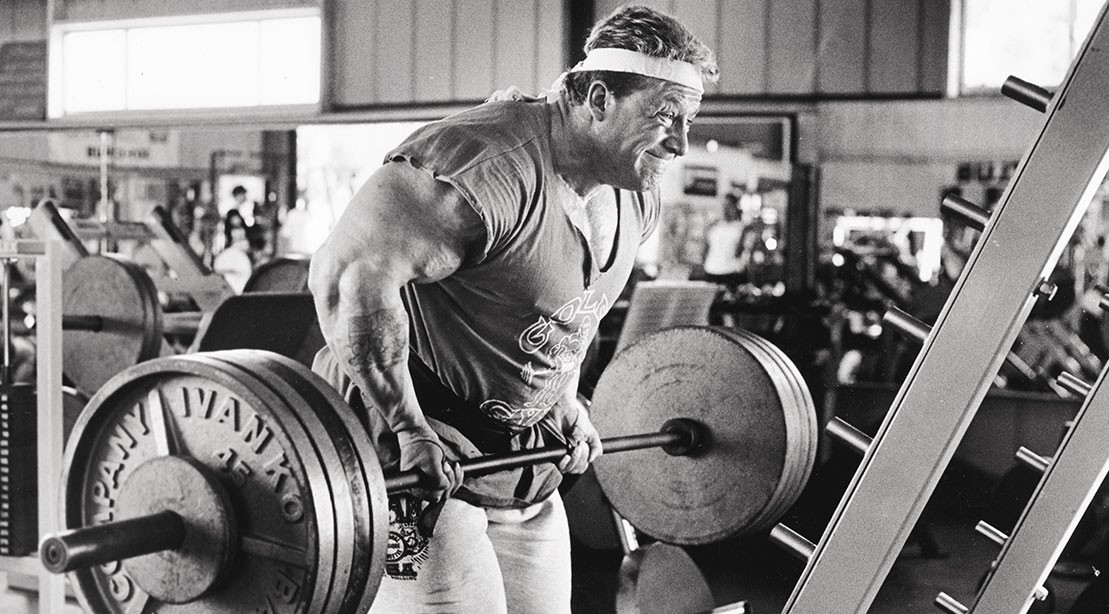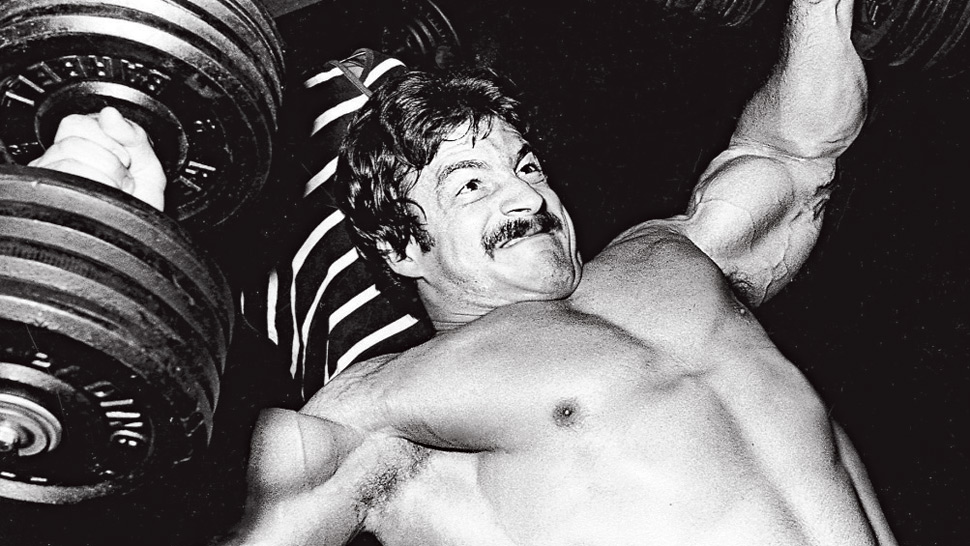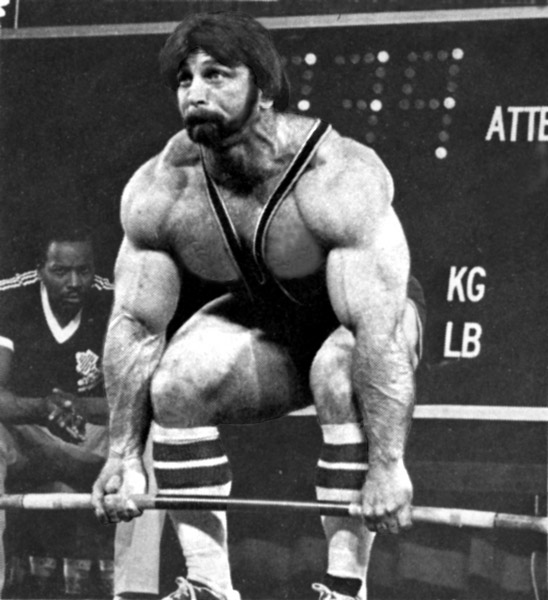
Experiments in Strength Training Minimalism Part I
How little can a man do and still obtain optimal results?
Reality trumps everything. Hopes, wishes, dreams, preferences, likes and dislikes, all are blown to smithereens when reality puts down its mighty boot. For most American men, the reality is that time is their most precious commodity. The job eats up most of their available time, what’s left is divided between girlfriends, wives, kids, parents, friends, commitments and responsibilities. Men have no time to train and when they do find time to train they train alone and they train wrong and consequentially the results derived are consistently substandard.
Is it possible to make substantial gains, truly significant gains, while having a limited amount of time to train? Men feel that unless they have 3-4 days a week to mount a serious training effort, why bother? Anything less is a waste of precious time. Most fitness trainees mistakenly believe that a muscle must be worked two or three times a week or nothing of any physiological significance will occur. The premise is false.

Topflight strength athletes, champion powerlifters and strong men, even elite bodybuilders (like Mike Mentzer and Dorian Yates) have been training muscles once a week for decades – and getting sensational results. These men do not train a muscle once a week because they lack training time, they train minimally to obtain maximum results, i.e., radical increases in strength, power and lean muscle mass.
These champions can train a muscle (or a lift) as much or as little as they like, yet a sizeable percentage of the ultra-elite, the biggest and strongest, knock the hell out of a body part one time a week, then rest that shattered body part for six full days before training it again. This approach can offer a gain-producing training template for the time-pressed trainee.
From the 1930s through 1965, there were only two types of formalized weight training: bodybuilding and Olympic weightlifting. The “settled science” of that early era was that unless a muscle was trained three times a week, every 72 hours, that muscle would begin to atrophy, degenerate, gains gained would start to unravel. The muscle disintegration premise was totally erroneous yet formed the unchallenged rationale for the high-volume training associated with these early iron pioneers.
In 1965 powerlifting was formalized as a competitive sport. Power pioneers discovered that they were not recovering, session to session, trying as they were to train the three lifts three times per week. It is one thing to train the snatch, using 185-pounds for reps, thrice weekly and it is quite another to attempt to squat and deadlift 500-pounds for reps, each lift three times a week. Powerlifters of the 1960s slashed the training volume: they realized a 33% reduction in training volume by performing the three lifts twice instead of thrice weekly. The volume reduction resulted in immediate increases in size and strength.
In the 1980s the superstar lifters like Coan, Furnas, Gamble, Gant, Cash and Austin began training the big lifts once a week. The strength leaders were handling 800 + pounds for reps in the squat and deadlift and were not recovering, session to session. These men chopped 50% off their volume by reducing the three lifts from twice weekly to once a week. This once-weekly template was used by the power elite on a widespread basis. Size and strength gains once again skyrocketed. World records were set using the once-a-week template that have not been exceeded to this day.
Cutting-edge bodybuilders like Dorian Yates took notice and began training their big body parts once weekly. Bodybuilders sought the sheer muscle size powerlifters exhibited, attributable to the lifter’s steady diet of low volume training using low sets, low reps and bar-bending poundage; all underpinned by big eating.

The powerlifters of the day dwarfed the Olympia-level bodybuilders. Men like Kaz, Gamble, Cash, Furnas and Estep built incredible physiques – strictly as an unintended consequence of their power training. The lifters didn’t set out to build bodies better than the best bodybuilders in the world, that just happened, apparently as a natural by-product of their pursuit of world records in the three power lifts. Who knew?
What these men discovered was that the optimal way in which to grow and strengthen a muscle was to decimate the muscle in a hardcore resistance training session, using big weights for low reps. Big muscles take longer to recover than little muscles and heavy barbell squats and deadlifts fatigue many of the same muscles: lower back, glutes, upper thighs and abs.
Those that insist on squatting and deadlifting multiple times per week never allow these muscles to recover – unless they train with pipsqueak poundage. The big boys move massive weights for low reps using ultra-strict techniques. That’s where the big-time gains reside.
Elite lifters can get away with training a lift or a muscle once a week - not because they are pressed for time - but because, handled right, minimal volume and maximum intensity is the optimal way to train if the goal is to maximize size and strength gains.
The training split preferred by the power elite is based on empirical realism: place the squat and deadlift at opposite ends of the training week, drop a bench press session in between. Boom! Here is (was, and forever shall be) the default power training split….
Sunday: squat, leg curl, calf raise
Wednesday: bench press, dumbbell bench, incline bench
Friday; deadlift, power clean, row
Throw in some arm work, say triceps after benching, and dumbbell curls after back work and you have the classical power training routine. Nothing matters other than pushing up the poundage in the three lifts. There are an infinite number of potential programing variations that can be built atop this template.
In a pinch, the classic power strategy, big lifts done once a week, muscles trained once a week, can be compressed even further: train all three lifts on the same day, resistance train once a week - and be done with it for the rest of the week. Sounds crazy, doesn’t it?
Next: In the next installment, the lineage of once-a-week training will be shared and the nuts and bolts of how it can be expropriated by modern man pressed for time. Imagine, strength train once a week and make astounding progress…
Make sure to check out Marty Gallagher's latest books, Strong Medicine and The Purposeful Primitive, that are packed with a rich history of the sport of powerlifting and its founding fathers including proven, no-nonsense methods and "old school" knowledge for gaining strength, muscle and becoming leaner.
*Cover image credit: Six time Mr. Olympia Dorian Yates @thedorianyates
About the Author
As an athlete Marty Gallagher is a national and world champion in Olympic lifting and powerlifting. He was a world champion team coach in 1991 and coached Black's Gym to five national team titles. He's also coached some of the strongest men on the planet including Kirk Karwoski when he completed his world record 1,003 lb. squat. Today he teaches the US Secret Service and Tier 1 Spec Ops on how to maximize their strength in minimal time. As a writer since 1978 he’s written for Powerlifting USA, Milo, Flex Magazine, Muscle & Fitness, Prime Fitness, Washington Post, Dragon Door and now IRON COMPANY. He’s also the author of numerous books including Purposeful Primitive, Strong Medicine, Ed Coan’s book “Coan, The Man, the Myth, the Method" and numerous others. Read the Marty Gallagher biography here.

